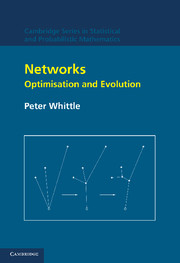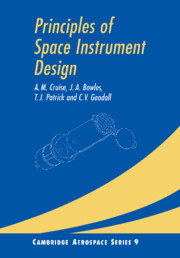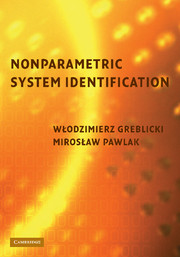Refine search
Actions for selected content:
1550 results in Control systems and optimization
7 - Convex analysis for non-negative blind source separation with application in imaging
-
-
- Book:
- Convex Optimization in Signal Processing and Communications
- Published online:
- 23 February 2011
- Print publication:
- 03 December 2009, pp 229-265
-
- Chapter
- Export citation
6 - Semidefinite programming, matrix decomposition, and radar code design
-
-
- Book:
- Convex Optimization in Signal Processing and Communications
- Published online:
- 23 February 2011
- Print publication:
- 03 December 2009, pp 192-228
-
- Chapter
- Export citation

Networks
- Optimisation and Evolution
-
- Published online:
- 23 November 2009
- Print publication:
- 12 April 2007

Principles of Space Instrument Design
-
- Published online:
- 12 November 2009
- Print publication:
- 28 June 1998

Nonparametric System Identification
-
- Published online:
- 06 November 2009
- Print publication:
- 16 June 2008
5 - Further switched systems
- from Part I - Theory
-
-
- Book:
- Handbook of Hybrid Systems Control
- Published online:
- 21 February 2011
- Print publication:
- 15 October 2009, pp 139-192
-
- Chapter
- Export citation
17 - Solar air conditioning – a benchmark for hybrid systems control
- from Part III - Applications
-
-
- Book:
- Handbook of Hybrid Systems Control
- Published online:
- 21 February 2011
- Print publication:
- 15 October 2009, pp 501-510
-
- Chapter
- Export citation
Preface
-
- Book:
- Handbook of Hybrid Systems Control
- Published online:
- 21 February 2011
- Print publication:
- 15 October 2009, pp xiii-xv
-
- Chapter
- Export citation
2 - Survey of modeling, analysis, and control of hybrid systems
- from Part I - Theory
-
-
- Book:
- Handbook of Hybrid Systems Control
- Published online:
- 21 February 2011
- Print publication:
- 15 October 2009, pp 31-56
-
- Chapter
- Export citation
16 - Networked control
- from Part III - Applications
-
-
- Book:
- Handbook of Hybrid Systems Control
- Published online:
- 21 February 2011
- Print publication:
- 15 October 2009, pp 471-500
-
- Chapter
- Export citation
3 - Hybrid automata
- from Part I - Theory
-
-
- Book:
- Handbook of Hybrid Systems Control
- Published online:
- 21 February 2011
- Print publication:
- 15 October 2009, pp 57-86
-
- Chapter
- Export citation
Frontmatter
-
- Book:
- Handbook of Hybrid Systems Control
- Published online:
- 21 February 2011
- Print publication:
- 15 October 2009, pp i-iv
-
- Chapter
- Export citation
Notation
-
- Book:
- Handbook of Hybrid Systems Control
- Published online:
- 21 February 2011
- Print publication:
- 15 October 2009, pp xvi-xvi
-
- Chapter
- Export citation
Part II - Tools
-
- Book:
- Handbook of Hybrid Systems Control
- Published online:
- 21 February 2011
- Print publication:
- 15 October 2009, pp 277-278
-
- Chapter
- Export citation
1 - Introduction to hybrid systems
- from Part I - Theory
-
-
- Book:
- Handbook of Hybrid Systems Control
- Published online:
- 21 February 2011
- Print publication:
- 15 October 2009, pp 3-30
-
- Chapter
- Export citation
Index
-
- Book:
- Handbook of Hybrid Systems Control
- Published online:
- 21 February 2011
- Print publication:
- 15 October 2009, pp 553-565
-
- Chapter
- Export citation
References
-
- Book:
- Handbook of Hybrid Systems Control
- Published online:
- 21 February 2011
- Print publication:
- 15 October 2009, pp 511-552
-
- Chapter
- Export citation
14 - Industrial controls
- from Part III - Applications
-
-
- Book:
- Handbook of Hybrid Systems Control
- Published online:
- 21 February 2011
- Print publication:
- 15 October 2009, pp 405-438
-
- Chapter
- Export citation
Part III - Applications
-
- Book:
- Handbook of Hybrid Systems Control
- Published online:
- 21 February 2011
- Print publication:
- 15 October 2009, pp 375-376
-
- Chapter
- Export citation
4 - Switched and piecewise affine systems
- from Part I - Theory
-
-
- Book:
- Handbook of Hybrid Systems Control
- Published online:
- 21 February 2011
- Print publication:
- 15 October 2009, pp 87-138
-
- Chapter
- Export citation
